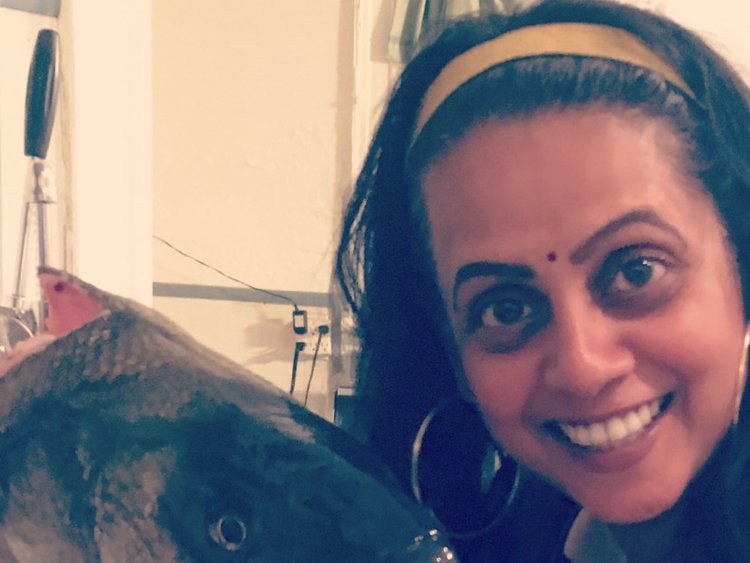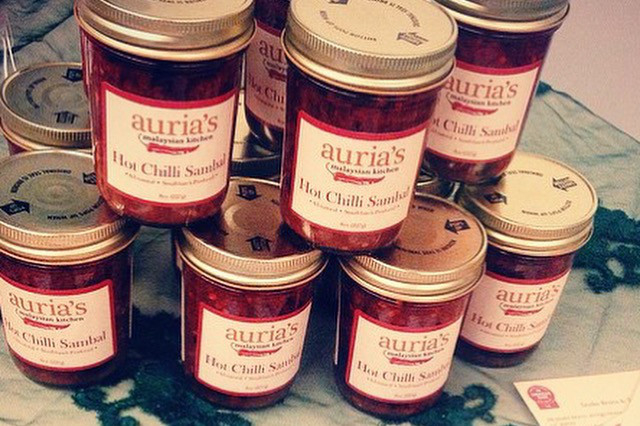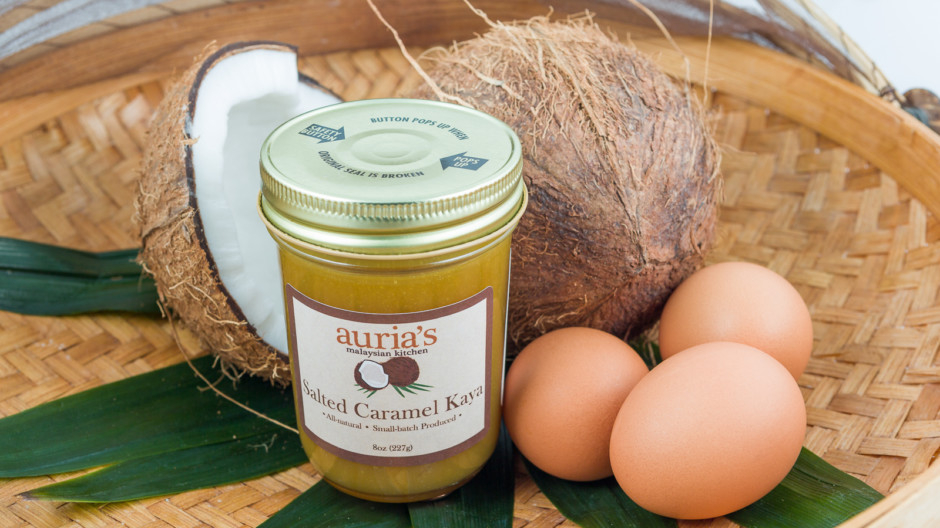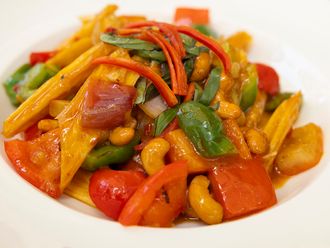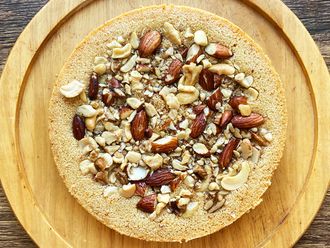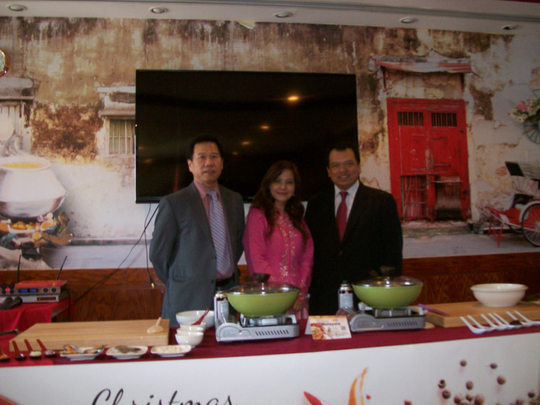
Dosa Hut? Curry Truck? Chaat Parlour? Sushi Corner? Falafel Carts?
These are some of the oddities that have sprung up and can be spotted in many cities of the US, but nowhere is this more ubiquitous than in the huge megalopolis of New York whose culinary countenance has undergone a dramatic transformation as migrants from every corner of the world stream into the city — legally and illegally — in quest of their American dream.
These immigrants have also brought with them their culinary culture, which the host population seems to appreciate, given the versatility and the range of dishes they offer.
“I’ll take a vegetarian thali [platter],” the blonde woman orders from the menu at the Saravana Bhavan, a vegetarian restaurant at the corner of 26th Street and Lexington Avenue. Her American accent is unmistakable — the word “thali” sounds more like “tally” — but the waiter is unfazed and knows exactly what she wants.
A male American, attired in suit and tie, orders the “Indian doughnut” — as some Americans call the doughnut-shaped “wada” — telling the waiter to provide extra “zamba” (“sambar”, the soup-like lentil curry in which the “wada” floats). The dosas are made extra crispy to suit the local palate.
Saravana, an Indian chain with restaurants around the world, including the UAE, has become popular among those wanting to eat vegetarian food and it is not uncommon during lunch time to see lines of customers patiently waiting.
New York City alone has more than 200 Indian restaurants, not counting the street vendors who ply what are known as “mobile fast-food restaurants”, hawking their food on trucks or carts at most corners of the city.
The proliferation of such restaurants whose food was once considered “exotic” has also become an important arrow in the quiver of many countries that try to promote their exports of foods, spices and beverages to the world’s most lucrative food market in value terms. Indeed, as India and other countries have over the years recognised, food is not just the way to a man’s heart; food also contributes to strengthening a country’s soft power. For India, its cuisine has become as important as other segments such as yoga, Bollywood, ancient philosophy and information technology to bolster its soft power. The average Joe Smith, tired of the burger, steak and heavy pizza meals, seems to be more inclined to trying out various foods from around the world. Vegetarian foods are becoming increasingly popular in the US.
But vegetarianism is only one aspect of India’s culinary culture. The majority of Indian restaurants serve the standard fare comprising items such as tandoori chicken tikka, fried masala fish, Hyderabadi biryani, dal makhni, palak paneer and what have you. These names, despite their exotic intonation, come as natural to most American patrons at Indian restaurants as burgers, steaks and pizzas. Saravana, which pursues the strategy of setting up restaurants in cities with a large Indian population, has two restaurants in New York City.
Besides the proliferation of Indian eateries, cuisines of other countries and regions have also made a mark here. Taco Bell, for example, is an American chain of fast-food restaurants based out of Irvine, California. It serves a variety of so-called Tex-Mex foods (the hybrid of Texan and Mexican), deriving from the culinary creations of Tejanos (Spanish for “Texan”), a term used to identify a resident of Texas of Criollo, Spanish or Mexican-American heritage, spreading from border states such as Texas in the southwestern region of the US to the rest of the country and also Canada. Tex-Mex cuisine offers a range of items, including tacos, burritos, quesadillas, nachos, and a variety of “value menu” items. Taco Bell claims to serve more than 2 billion customers each year in 6,407 restaurants, more than 80 per cent of which are owned and operated by independent franchisees and licensees.
New York’s Fancy Food Show (NYFFS), held annually at the city’s Javits Exhibition Center in June, becomes one gigantic platform showcasing the incredible diversity of food products in the US and from around the world. It is here that one can experience the world’s culinary delights amid the overpowering fragrances that waft through the halls with food specialists, chefs and businesspeople vying for a slice — even crumbs — of the lucrative US food market.
Speciality foods are on the ascent. According to the US Specialty Food Association, the apex organisation for the speciality food industry, the total US speciality food sales in 2015 hit a record value of $120.5 billion (Dh443 billion). The SFA reported a 21.2 per cent increase in speciality food sales from 2013 to 2015; retail accounted 78 per cent in speciality food sales and the food service sector the remaining 22 per cent.
Not surprisingly, Asian food suppliers make a beeline for the NYFFS, with large exhibitor contingents from countries such as China, Indonesia, Malaysia, the Philippines, Thailand and Vietnam showcasing all kinds of food products — from ready-to-eat frozen seafood to biscuits, cakes and other bakery products to spices, fruits and vegetables.
India continues to strengthen its position in the US food market. Once condescendingly described as a “curry supplying nation”, India has climbed up the supply chain ladder by adding sophisticated frozen and other fast-food varieties — ranging from “diabetic rice” with low glycaemic content to ready-made curry-based food products — catering not only to the nearly 4-million strong Indian diaspora and other Asian communities but also to mainstream American consumers.
But Indian suppliers have also cleverly devised ways to increase their market share. The “Malaysian Paratha” — the white fluffy fried bread that goes well in the Malaysian roti-channai combo and supplied as ready-to-eat frozen item by Malaysian suppliers — is very popular among the Indian and the South Asian diaspora in the US. This delicacy is now also offered by Indian food suppliers.
Just like the Chinatowns in various US cities, “Little Indias” with huge clusters of shops, restaurants and Indian diaspora have come up across the country. The Queens district in New York, which was the destination of the first Indian immigrants in the city, today looks like a miniature South Asia, comprising Indians, Bangladeshis, Pakistanis, Nepalese and Tibetans. Little Indias have also sprung up in New Jersey in places such as Jersey City and Edison.
The Thai “Sri Racha” flavour — Americans spell it as “Sriracha” — is becoming popular. Its tangy taste characterises food products such as potato chips, popcorn, nuts and sauces, with some suppliers even offering the sauce in 100 per cent organic form.
Kelvin Ong, the export marketing manager of a Malaysian food-exporting company Hua Huat based in Johor Bahru, told Weekend Review that demand for organic, gluten-free and non-GMO products would increase. “With their growing health awareness, American consumers are increasingly paying attention to nutrition. This will also fuel demand for organic products.”
Organic food products are having a boom time, recording sales of $43.3 billion in 2015, up 11 per cent over the previous year’s level and exceeding by far the mere 3 per cent growth achieved by the overall food market, according to the Organic Trade Association’s (OTA) 2016 Organic Industry Survey. Organic food products have, however, come under greater scrutiny, particularly if they originate from countries that have allegedly been shipping tainted food products as organic foods.
SFA surveys suggest that the top five emerging cuisines are Mediterranean, Latin, Greek, Spanish and Thai.
In an interview, Louise Kramer, SFA’s communications director, provided some insights into the huge US food market. “Even during the last severe recession, American consumers were buying speciality foods. In general, I can say that young consumers, for example, are the main driver of consumption of speciality foods. One out of three food dollars is spent on speciality food today,” she said, adding that the “crossover cuisine” — the fusion variety — has become a trend here. In her view, Thai flavours are quite popular. Today, schoolchildren are given seaweed snacks instead of potato chips with their lunch, and they liked seaweed snacks, she says.
Nowhere in the world are consumers so open to foreign cuisines as here in America. An enterprising young Malaysian female chef, Auria Abraham of Brooklyn, who now offers her own brand of condiments, coconut jams, etc, says that two products — a hot-chilli sambal and the lime-leaf sambal — are popular because of their fiery taste.
“While most Americans are open to foreign cuisines and are familiar with Asia’s culinary diversity, they are intrigued by the colourful packaging of a number of Asian and Malaysian food products and names of dishes, and want to know more about them,” Abraham says, advising foreign suppliers to do some savvy marketing to establish themselves in this lucrative market.
Abraham’s views are echoed by many. M. Shahrulmiza Zakaria, Malaysia’s trade commissioner in New York, told Weekend Review that Malaysian food, which is becoming increasingly popular, is expected to make inroads into the mainstream American market. He said Malaysian cuisine has been listed among the top five trending flavours in the US for the last two years, supported by the survey by the National Restaurant Association, the largest restaurant and food service trade association in the US. There are about 80 Malaysian restaurants in the US, which indirectly provide a strong support system for promoting this cuisine.
Zakaria said his country’s promotion activities were carried out under the theme “Bringing Malaysian food to every American home!” This campaign was aimed, eventually, at promoting exports of Malaysian spices, food products and beverages into the American market. Malaysia organised a food event called “Christmas a-la-Malaysia”.
But as Malaysian and other Asians are also realising, American consumers are no longer “just eating food as they see it”, to quote a Taiwanese food supplier John Liu who discovered that health consciousness was driving more and more Americans, particularly women, to check the nutritional value of products they consume. All food products, including readymade frozen foods, are required by law to have tags listing the nutritional content of the product, indicating calories, fat, sodium content, etc.
US food circles have, meanwhile, welcomed the arrival of the yellow-coloured spice called turmeric which is prized not just because of its flavour-enhancing attributes but also because of its purported medicinal properties. Besides being used as a spice, turmeric is sold in various forms: a US-based company called Rishi’s offers turmeric ginger chai, the Republic of Tea supplies turmeric cinnamon tea, while Feridies sells turmeric-flavoured peanuts and Vosges produces ginger-turmeric dark milk chocolate. These varieties are described as “tomorrow’s products”.
The fiery kimchi — Korean pickled cabbage — is another culinary rage. Koreatown in Manhattan is an appropriate address to try this pungently spiced crunchy pickle that goes well with meats and some seafood products. It is not unusual to find locals sinking their teeth into hot dogs with a layer of kimchi.
Some of the promising foods of the future are sambal sauce and the Malaysian rendang curry.
With growing health consciousness among consumers, McCormick, the spice company, has produced research suggesting that bold food flavours with health benefits will be popular. Ingredients such as chia seeds and turmeric are increasingly being mixed with other spices and can be added to a wide range of dishes from meats to oatmeal and smoothies.
McCormick expects ingredients such as sambal sauce — made from chillies, rice vinegar, sugar and garlic — to become popular.
According to Delivery.com, orders of Malaysian rendang curry increased 70 per cent over 2014 and 2015 compared to the previous two years.
Manik Mehta is a writer based in New York.




